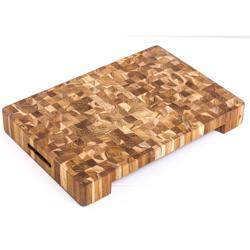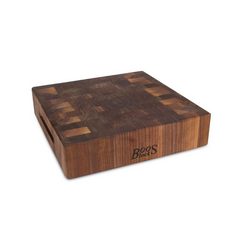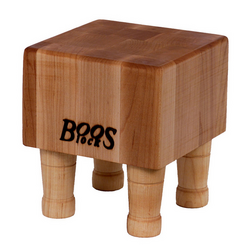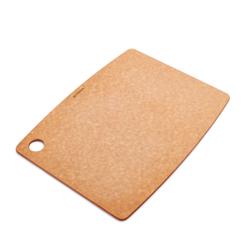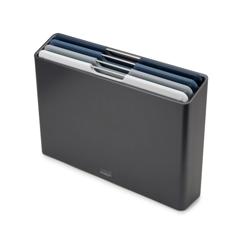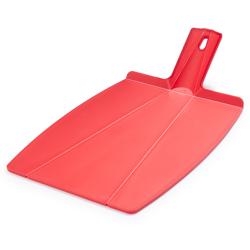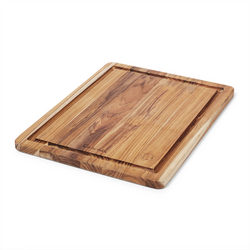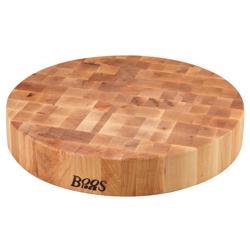-
(1)
Love this Board
Pros: beautiful, bowl cut out, easy to clean
-
This beautiful, 3"-thick butcher block is proudly made in the USA from the finest walnut. The distinctive end-grain construction is easy on knives and won’t show scratches as easily as standard cutting boards. On top of that, the Boos cream...
-
Supplier of butcher blocks and cutting boards to the finest restaurants and homes, John Boos now brings its outstanding craftsmanship to this handsome country work table, soon to be the most versatile table in your home.
Its 1¾"-thick, northern... -
Good kitchen help isn’t hard to find. This versatile and mobile cart follows you to wherever the next job takes you. Its hard rock maple surface gives you superior strength and durability. The 1.5" thick top rests on a food-service-grade 18/8 stainless...
-
This beautiful reversible 6" thick butcher block is manufactured from the finest northern-white species of hard rock maple. Maple wood is naturally anti-bacterial and won’t harbor any bacteria. On top of that, the Boos cream finish creates...
-
This handsome 2¼"-thick end-grain walnut chopping block is a useful addition to any serious cook’s kitchen. The block is reversible, so you can safely use one side for meat and poultry and the other for fruits and veggies. The block also...
-
This handsome 3" thick end-grain walnut chopping block is a useful addition to any serious cook’s kitchen. On top of that, the Boos cream finish creates a protective layer that prevents food and moisture from damaging the wood.
-
This beautiful 4" thick butcher block is manufactured from the finest northern-white species of hard rock maple. Maple wood is naturally anti-bacterial and won’t harbor any bacteria. On top of that, the Boos cream finish creates a protective...
-
Add a contemporary statement piece to the kitchen with this round butcher block made with sustainable end grain wood. This thick, heavy-duty cutting board is ideal for everything from prepping fresh produce and slicing bread to serving cheese or charcuterie....
-
This beautiful chopping block with wooden bun feet is manufactured from the finest northern-white species of hard rock maple. Maple wood is naturally anti-bacterial and won’t harbor any bacteria. On top of that, the Boos cream finish creates a...
Butcher Block
Butcher blocks are durable and versatile kitchen surfaces made from hardwoods such as maple, oak, or walnut. They are often used as cutting boards and can also serve as prep tables. With proper maintenance and care, butcher blocks can last for decades. Their natural beauty and warmth can add a rustic charm to any kitchen, and they are ideal for any cook who values both style and functionality.
Butcher Block
FAQ List
A butcher block countertop is a type of kitchen countertop made from thick, solid wood pieces that are glued together to form a sturdy surface. The wood used is typically hardwoods like maple, walnut, or cherry, and the surface is often treated with natural oils or waxes to protect it from moisture and stains.
To clean a butcher block cutting board, use a mixture of mild soap and warm water. Scrub the surface with a sponge or soft brush, then rinse with clean water and dry the board thoroughly. Avoid soaking the board in water or putting it in the dishwasher, as this can cause warping or cracking.
The best wood for a butcher block product is a hardwood like maple, walnut, or cherry. These woods are durable, resistant to bacteria, and have a tight grain that won't dull knives. Avoid softwoods like pine or fir, as they can be easily damaged and may not hold up well over time.
Yes, you can use your butcher block cutting board for both meat and vegetables. However, it's important to clean the board thoroughly between uses to prevent cross-contamination. You may also want to consider using separate cutting boards for raw meats and vegetables to minimize the risk of foodborne illness.
To maintain your butcher block product, regularly oil or wax the surface with a food-safe product like mineral oil or beeswax. This will help protect the wood from moisture and stains, and keep it looking beautiful for years to come. Avoid exposing the product to extreme temperatures or direct sunlight, as this can cause warping or cracking.

